The LED Lighting You Don't Want (And The Kind You Do)
It’s an LED world. We just live in it.
These days, LED lighting has become more universal than ever. The no-questions-asked option for both indoor and outdoor lighting needs. In fact, it’s downright hard to find traditional tech these days.
And it’s easy to see why.
Compared to traditional lighting, LED lighting lasts longer, saves more on your energy bill, and delivers better light quality. It’s also quickly approaching parity with traditional lighting, making it hard not to make the switch.
You’d think that if your fixture is LED, it means it’s a quality, reliable light, right?
Not always.
This is where the fly-by-night lighting manufacturers and retailers come in. They’ve discovered that they can make and sell sub-par, lower-quality LED fixtures that seem fine at first glance.
At second glance? That’s a whole different story.
One that could involve safety hazards, inconveniences, and inconsistencies.Not to mention, a potential challenge to even locate an accompanying spec sheet or installation instructions.
Remember, replacing bad lighting costs time and money; it can mean a stop in operations or productivity; it can mean decreased levels of safety in parking lots or garages.
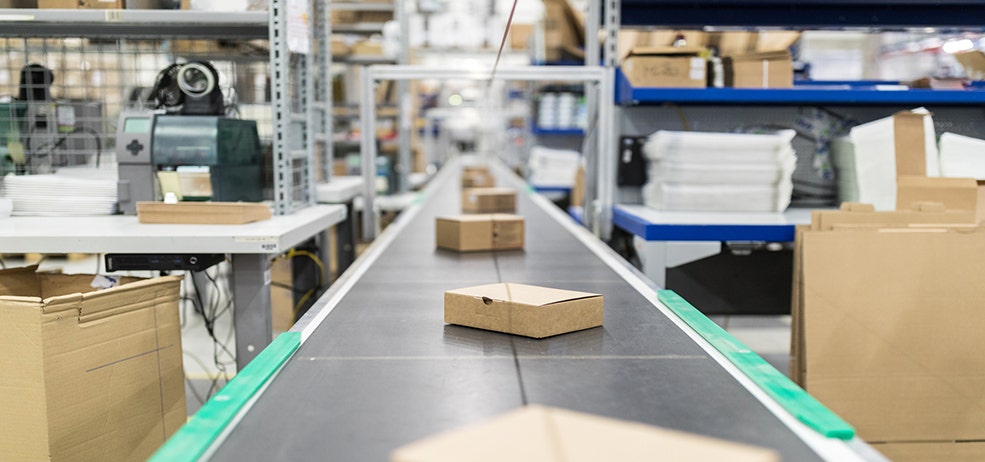
You might be wondering:
How do I know an LED luminaire is high quality? How can I know the good ones from the bad ones? What can I look for, so I don’t waste my time and money?
Remember that story we mentioned? We’re about to share it with you. And answer all your questions. Simultaneously.
In doing some product research, our Product Manager, Jason S., ordered an LED area light fixture from a small LED lighting company.
It looked fine at first, but once Jason looked a little closer, he noticed some glaring red flags.


The Driver
First of all, what’s a driver?
LED drivers, similar to ballasts on fluorescent lamps, protect a fixture from voltage spikes, which could cause faster degradation over time or deliver a higher or lower output than promised.
It also regulates a fixture’s temperature, stopping it from either under- or over-heating.
In a high-quality fixture, there are no gaps present between the driver and the wall of the housing, ensuring that heat can’t escape.
Which brings us to Jason’s area light:
The area light’s driver looks to be glued down to the house, giving the fixture a “homemade” quality and creating—you guessed it—gaps between the driver and the wall.
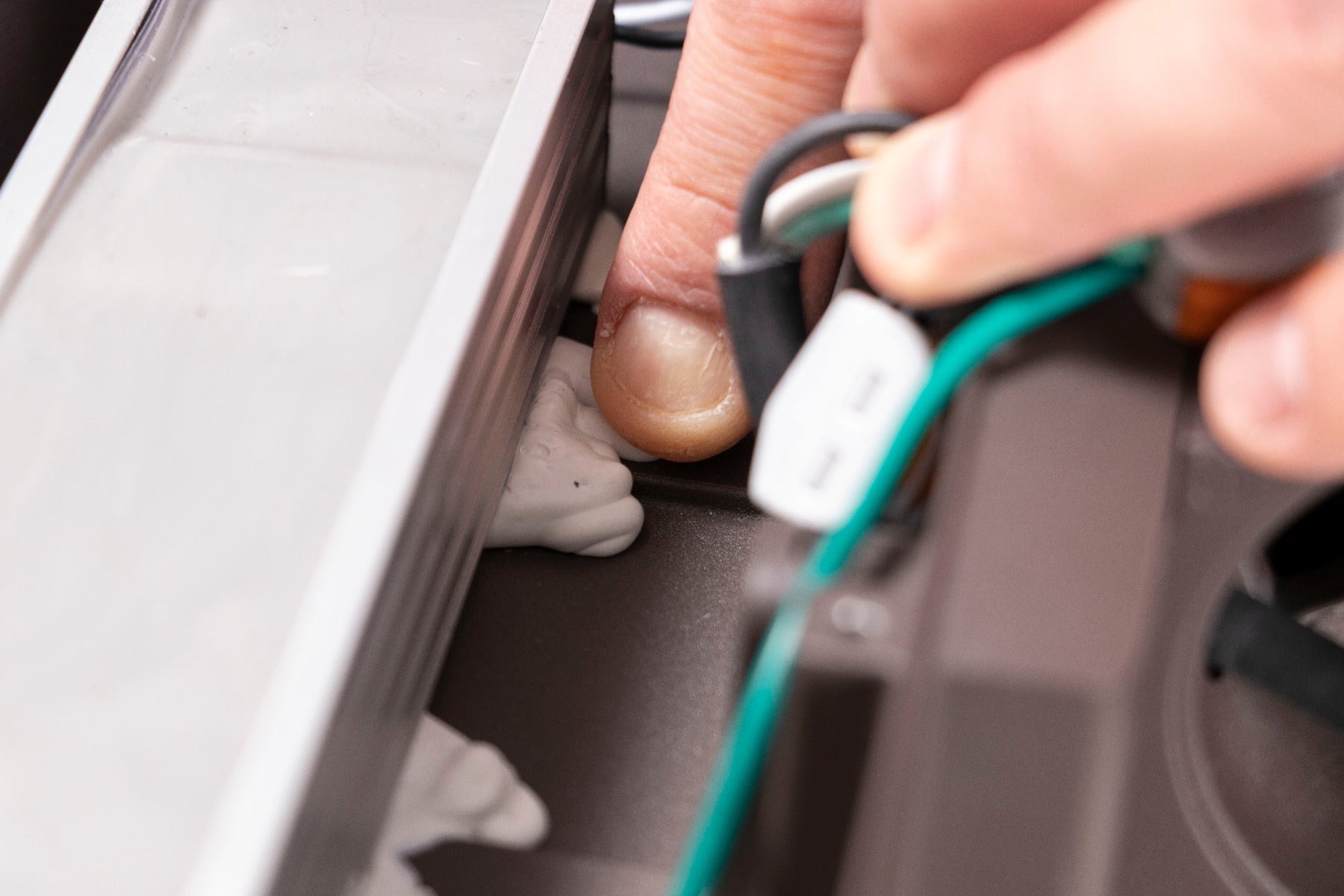
“With gaps present, heat isn’t drawn from the driver as efficiently as when it’s mounted directly to a metal surface. This results in an inconsistent thermal performance,” Jason tells us. “That’s why we use thermal epoxy within our lighting. It's ideal for applications needing high adhesive strength and designed specifically to fill in gaps like these.”
But that’s not all.
There also isn’t a bracket included to hold the driver in place, which means there’s no guarantee that the driver is even sitting where it was originally positioned.
The result? More thermal inconsistency.
Which bring us to...

Frankenstein’s Bolts
One of the things we look for before offering a product up for sale on our website is that it’s aesthetically pleasing. Many projects call for it, and it makes both the fixture and the space around it look nicer.
The bolt on this area light is, in Jason’s words, “gigantic.” In fact, he doesn’t even have a large enough allen wrench on hand to remove it.
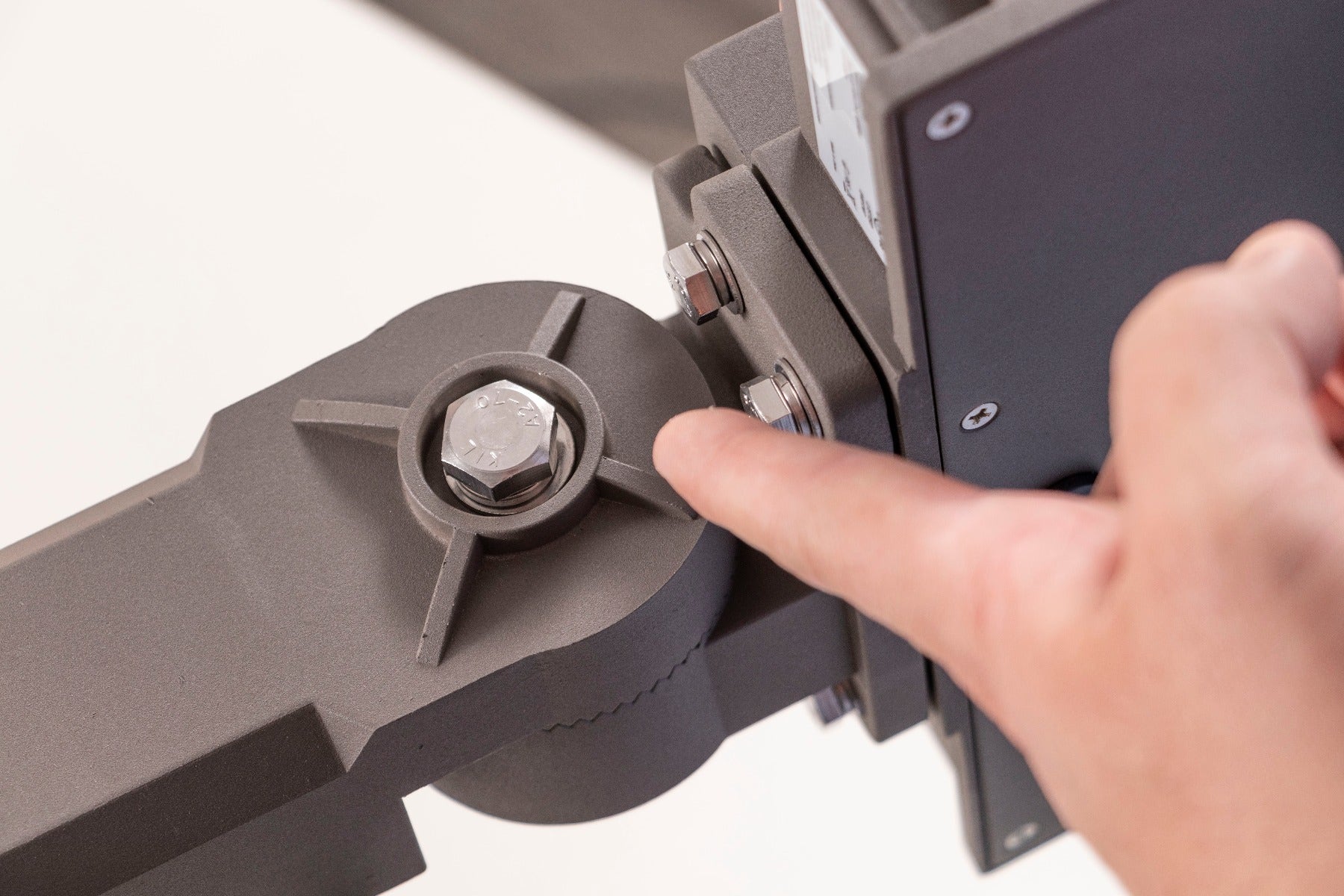
How do e-conolight's LED area lights differ?
Jason says, “We ask suppliers to use a cup point set screw to help hold a product in place. Not only are they much easier on the eyes, but they have a tighter hold on the tenon, which holds the fixture in place more securely.”

Sun’s Out, Wires Out
Normally, one would assume that the wires of an LED fixture would not be exposed through the mounting hardware.
This is not one of those times.
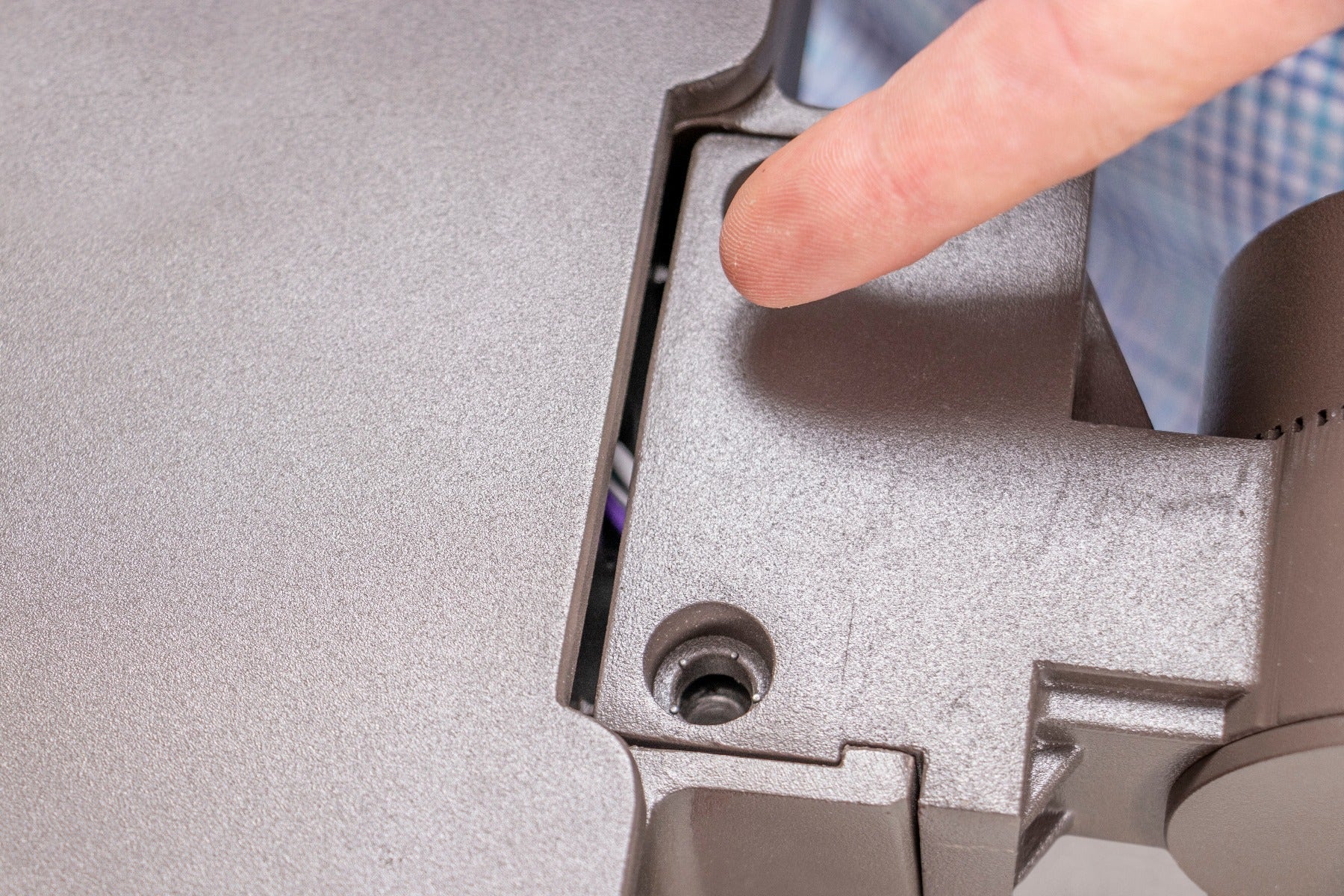
Here’s why it's a problem:
It’s both a safety and water ingress issue. Meaning, it can’t be used as an up-light because water would seep right in.
However, since the fixture came equipped with an adjustable fitter, we could potentially assume it was designed for certain orientations or no-tilt.
A quick glance at the spec sheet should tell us right away.
Except nothing is noted there.
At this point, what do we do?
“If it was our fixture, our next step would be to conduct a mechanical evaluation of the product,” Jason tells us. “We’d then go back to the supplier and let them know they need to increase the quality before we’d ever put it up for sale on our website.”

No Screw Retention, No Service
Surprise:
You'll need to unscrew a whopping seven screws to get access to this fixture’s driver. And none of them are retained.
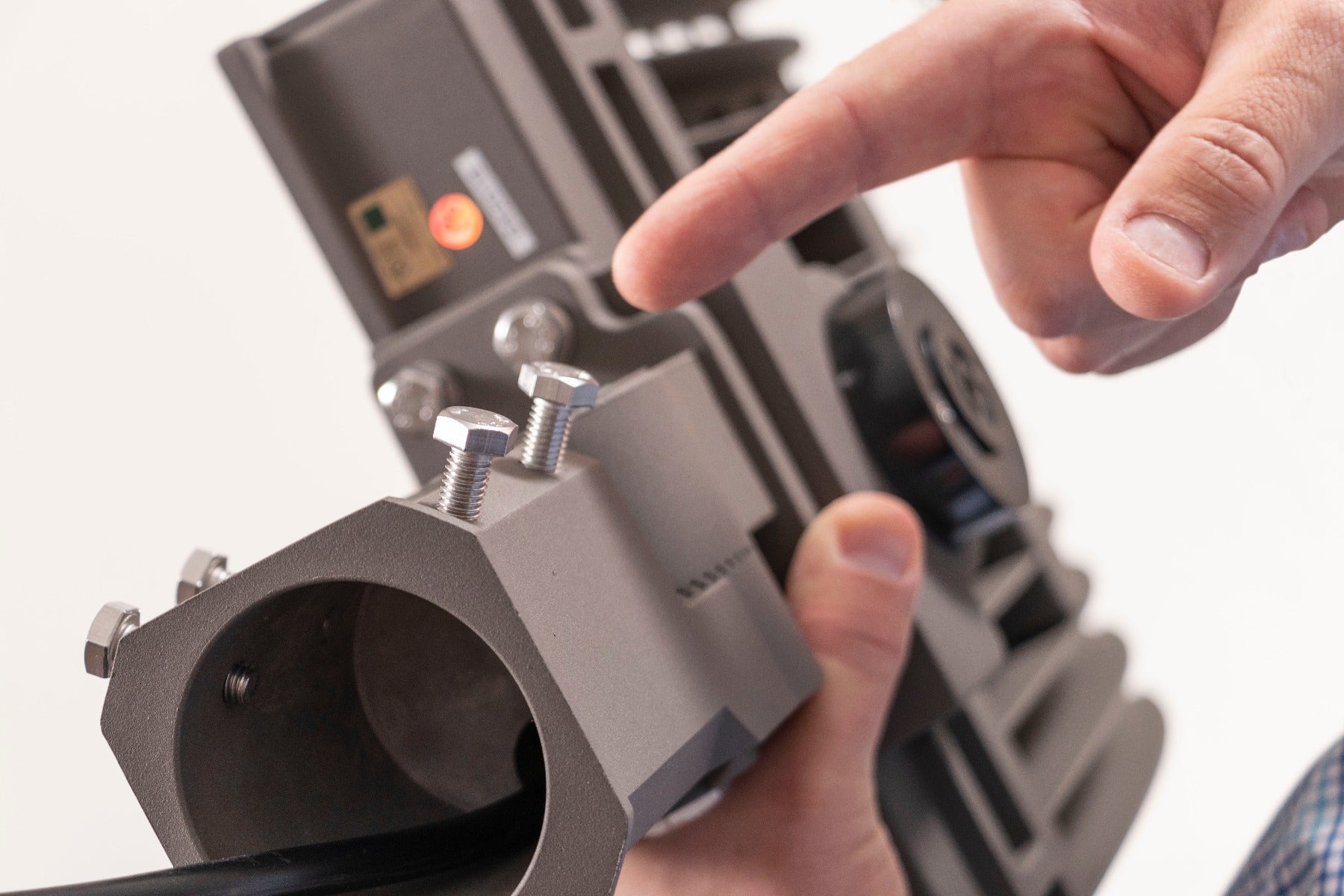
As these small screws are easily loosened and dropped, this can create a real headache for contractors, even lengthening the (precious) time of an install.The solution?
“We ask that our lighting suppliers put retentions on their screws,” Jason tells us. “It just makes everyone’s lives easier.”
Which is the whole point, right?
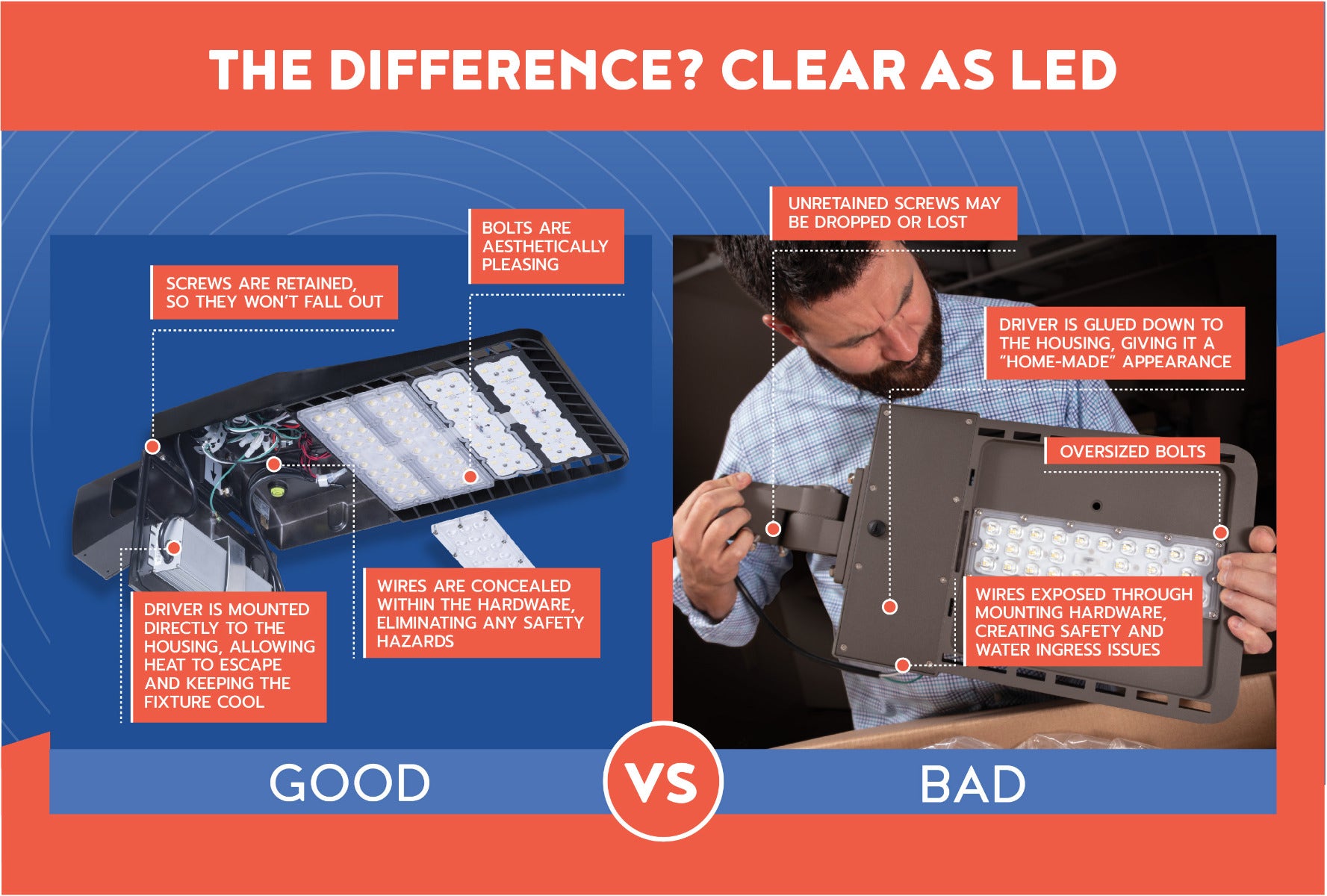

The (Other) Point: Someone Get This Fixture Tested
Before you buy a fixture, you want to make sure it’s been fully tested and certified.
Just look for the certifications; you can usually find them on the product box or website.
UL (Underwriters Laboratories) tests for safety and shocks.
ETL by Intertek also tests products to make sure they meet North American safety guidelines.
DLC (DesignLights Consortium®)specializes in certifying commercial lighting in everything from quality to energy efficiency to warranty.
Here at e-conolight, we have our own third-party testing facility on-site. And since we complete our testing quickly and without any additional costs, we’re able to offer high quality products at affordable prices.
Here’s what tests we’d put this area light fixture through to make sure it’s safe for customers like you:
1) Linear Vibration
- Performed on any pole-mounted fixture.
- Ensures products on poles stay fixed in the face of vibrations and movement.
2) Rain
- Makes sure products are sealed tight enough that water can’t get inside and cause a hazard.
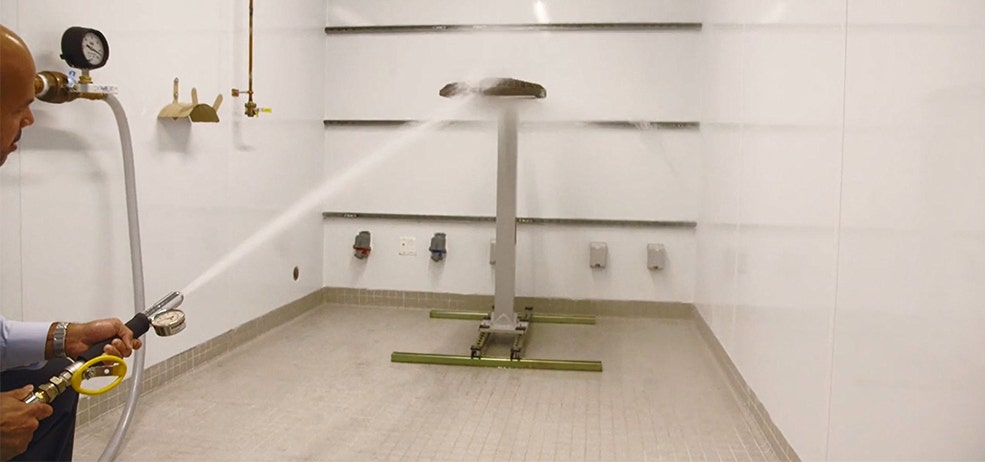
3) Thermal
- Exposes the fixture to simulated high heat and humidity.
- Ensures lighting performs as promised in extreme temperatures.
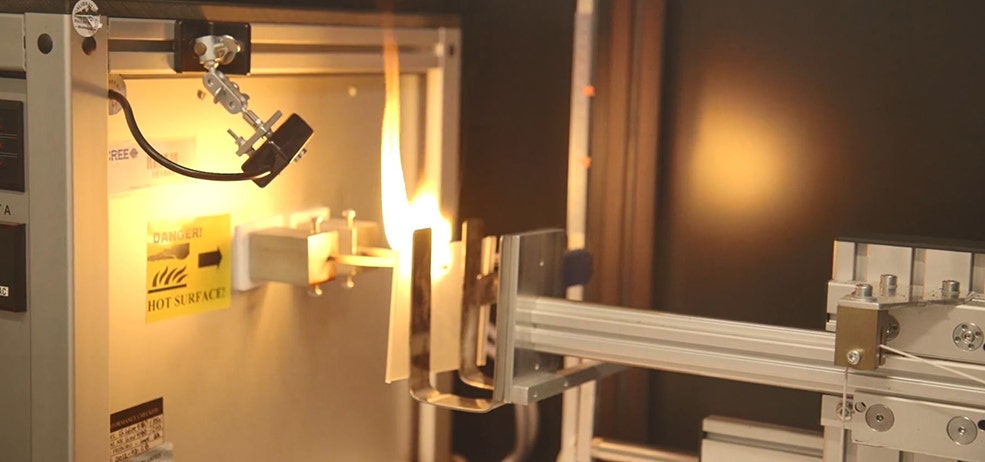
4) Electrical Input/Min. And Max. Voltages
- Makes sure the voltage on the product matches up with what’s advertised.
- Ensures proper temperature regulation.
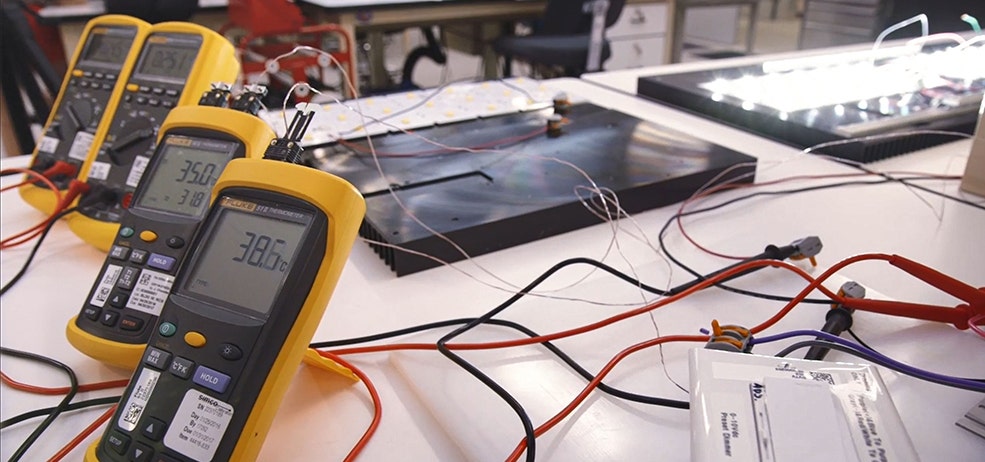
5) Reliability lab
- Tracks product performance over time to ensure high standards of quality.
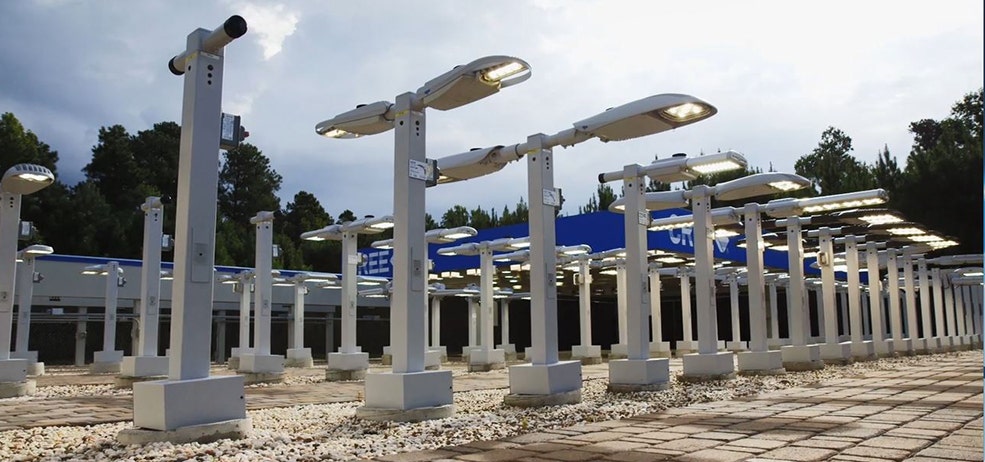

The Takeaway
"Don't be like me,” Jason says, with a laugh. “Don’t order cheap lighting from an unknown LED lighting retailer just because it’s cheap. It can cause a whole slew of safety issues, aesthetical issues, and just plain inconveniences that you don’t have time for.”
We’re looking at you, seven unretained screws.
You know, there’s a saying that you get what you pay for. Implying that you have to shell out a bunch of cash to get a good product.
But here’s the thing:
With us, you don’t.
Since we ship directly to you and don’t have to pay any middlemen, and we have our own lighting testing facilities on-site, we cut the extra costs and pass the savings on to you.
Oh, and all those high quality, quality-tested LED area lights we were talking about? Find them all on our website. Each one is UL/ETL certified, with a 5-year warranty.
Call our customer service experts at 1-888-243-9445 if you have any questions, or if you need help placing an order.


